Lying still for a month after hemorrhoid surgery, the man developed blood clots scattered throughout his veins, causing his legs to swell and risk necrosis.
At the end of April, Mr. Kha (69 years old, living in Binh Duong ) had hemorrhoid surgery. The doctor told him to limit his movements for 1-2 days after the surgery. Because he thought that moving around too soon would cause the disease to relapse, he almost stayed in one place for a month. At the beginning of June, his left leg was swollen, tense, and had difficulty walking. After a check-up at the provincial hospital, he was diagnosed with venous thrombosis and given anticoagulants. After 10 days of treatment but his condition did not improve, he was transferred to Tam Anh General Hospital in Ho Chi Minh City.
On June 19, Dr. Nguyen Anh Dung, Head of the Department of Cardiovascular and Thoracic Surgery, Cardiovascular Center, Tam Anh General Hospital, Ho Chi Minh City, said that Mr. Kha was hospitalized when his left leg was severely swollen, almost twice as big as his right leg, and he could not walk normally. Ultrasound and CT scans showed that the patient's left leg vein had spread to the pelvic vein. Not only that, part of the blood clot also floated up, causing a mild pulmonary embolism. The patient did not respond to treatment with anticoagulants. If the blood clot is not treated, the leg will be deprived of blood and easily become necrotic.
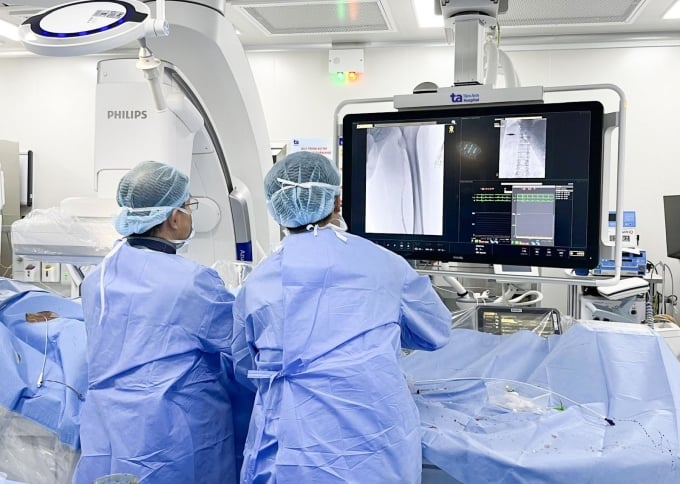
Dr. Nguyen Anh Dung (left) and Dr. Le Van Tuyen are removing a blood clot from a patient's leg vein. Photo: Tam Anh Hospital
The procedure to remove the blood clot for Mr. Kha took 150 minutes. Dr. Le Van Tuyen, Vascular Intervention Center, Tam Anh General Hospital, Ho Chi Minh City, said that the patient had scattered blood clots from the femoral vein up to the pelvis, so to completely resolve the problem, it was impossible to access from the normal femoral vein. Instead, the doctor had to go from the popliteal vein under ultrasound guidance.
First, the doctor inserted an inferior vena cava filter through the right leg vein to prevent the blood clot from continuing to flow up and causing pulmonary embolism. Next, a catheter was placed through the left popliteal vein to infuse thrombolytic drugs. After 20 minutes, the blood clot was broken down, and the doctor proceeded to aspirate the vena cava and femoral vein thrombosis. Finally, thanks to intravascular ultrasound (IVUS), the doctor discovered that the fibrotic thrombus was the cause of severe iliac vein stenosis. The team used an 8mm balloon to clear the blood flow, saving the patient's left leg.
After the intervention, the vein was re-opened. Two days later, the swelling in his left leg had reduced significantly, there was no more pain, Mr. Kha could walk normally and was discharged from the hospital.
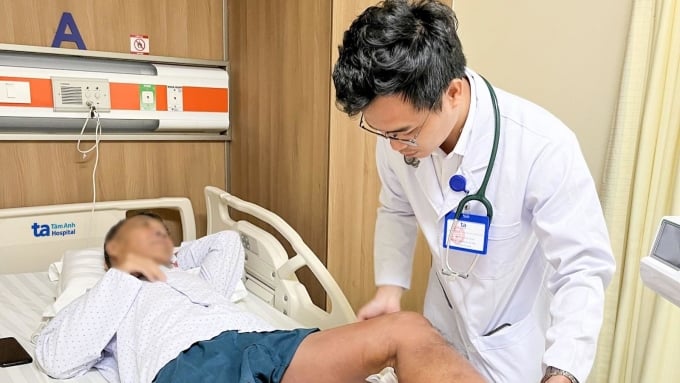
Dr. Le Van Tuyen examines a patient before discharge. Photo: Tam Anh Hospital
Dr. Tuyen added that in cases of widespread leg vein thrombosis like Mr. Kha's, if only treated with anticoagulants, it will take a very long time. In addition, the patient has a high risk of thrombosis recurrence or post-thrombotic syndrome, manifested by symptoms of leg pain when moving, swelling, skin ulcers...
IVUS-guided interventional treatment of venous diseases is a modern technique that helps shorten treatment time and quickly restore mobility for patients. At the same time, this method also limits the risk of recurrence and post-thrombotic syndrome.
Venous thrombosis occurs when a blood clot forms in the venous system of the lower limbs, blocking blood flow. If the clot is not treated promptly, it can lead to complications such as pulmonary embolism, chronic venous insufficiency, postphlebitic syndrome (damage to the veins caused by blood clots that reduce blood flow to the affected areas)...
Dr. Dung recommends that changing your lifestyle is the most effective way to help prevent deep vein thrombosis. Everyone should spend at least 30 minutes a day exercising, avoid standing or lying still for too long; do not sit cross-legged because this position hinders blood circulation, do light exercise 1-2 days after surgery; quit smoking and control your weight within the allowable limit (BMI below 23), avoid being overweight or obese. People who are sedentary, stand or sit in one place for long periods of time, are overweight or obese, smokers, have a family history of deep vein thrombosis... should be screened for lower limb venous disease to detect abnormalities and receive timely treatment.
Thu Ha
* Names of characters in the article have been changed.
Source link




![[Photo] President Luong Cuong receives Lao Vice President Pany Yathotou](https://vphoto.vietnam.vn/thumb/1200x675/vietnam/resource/IMAGE/2025/5/25/958c0c66375f48269e277c8e1e7f1545)
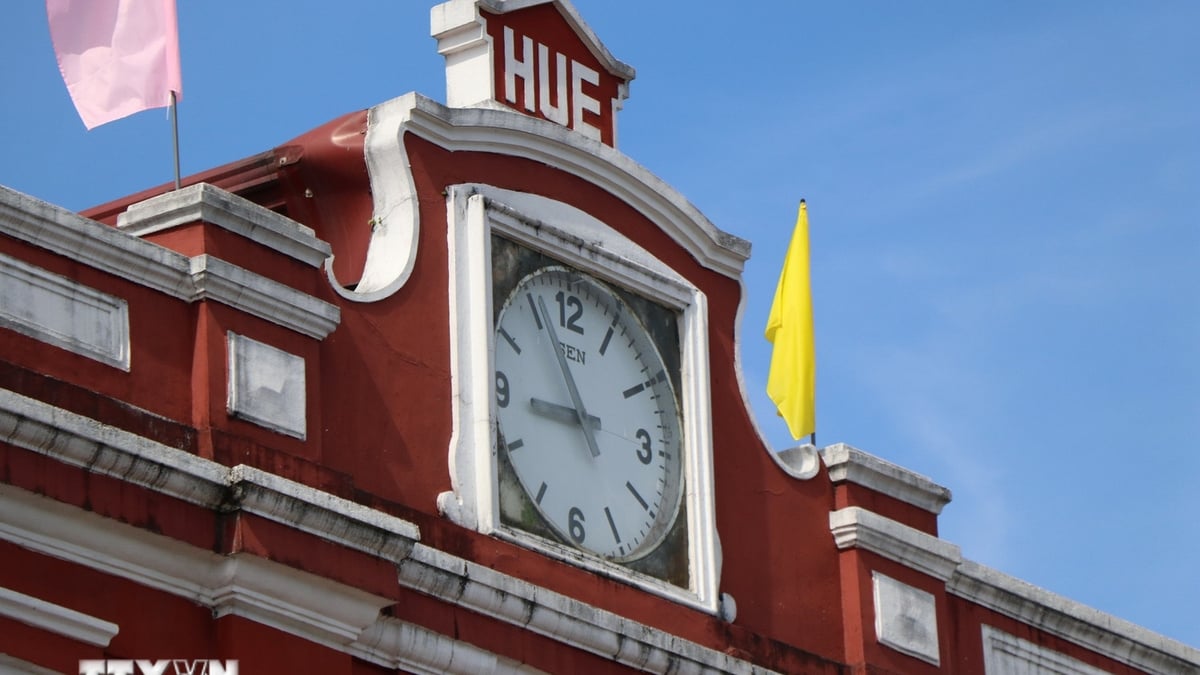
![[Photo] The coffin of former President Tran Duc Luong arrives in Quang Ngai](https://vphoto.vietnam.vn/thumb/1200x675/vietnam/resource/IMAGE/2025/5/25/1f1aca0d92ab47deae07934e749b35e6)
![[Photo] Festival of accompanying young workers in 2025](https://vphoto.vietnam.vn/thumb/1200x675/vietnam/resource/IMAGE/2025/5/25/7bae0f5204ca48ae833ab14d7290dbc3)










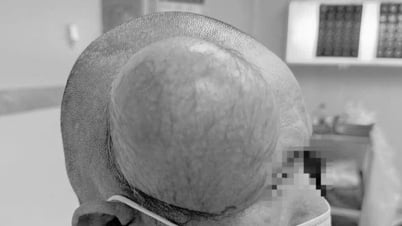


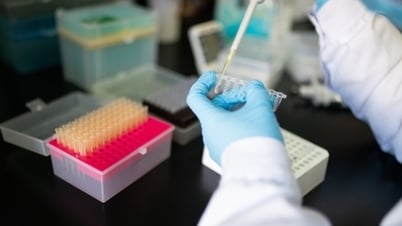























































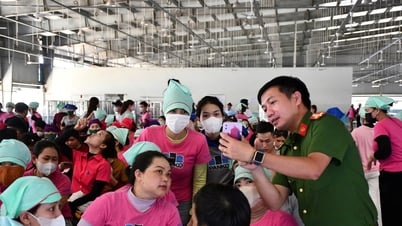








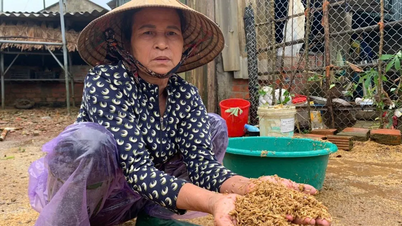







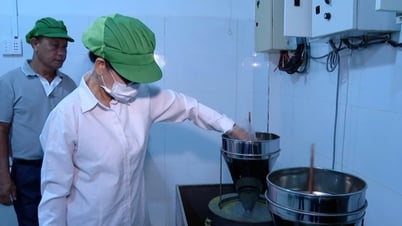





Comment (0)